Seaweeds of the South African South Coast


Order Ceramiales
Family Ceramiaceae
Carpoblepharis flaccida (J.V.Lamouroux) Kützing 1849: 690
Plants (on the south coast) up to 10 cm high, growing on Ecklonia radiata (on the west coast much larger and growing on Ecklonia maxima (Osbeck) Papenfuss). Basal part endophytic with a bunch of filamentous cells. Several erect axes may arise from the endophytic base. Main axis flattened, to 1(-2) mm broad, the segments consisting of a central cell, two large lateral pericentral cells and four (six in some tetrasporangium-bearing segments) smaller pericentrals in somewhat higher position. Cortication complete and in lateral direction consisting of up four cell layers, in transverse direction of up to two cell layers, exclusively developing in acropetal direction.
Tetrasporangia on all pericentral cells, the latter often increased to 8 in fertile segments. Fertile segments united in many stichidium-like proliferations on the main axes. Mature sporangia measure ca. 50 x 40 µm, tetrahedrally divided. Spermatangia on virtually all cells of proliferations of male plants being formed latest on the margins. Spermatangia ca. 10 X 5 µm. Carposporophytes lateral on proliferations (fewer on female plants than on male or tetrasporangial plants). Mature carposporophytes with several roundish gonimolobes up to 400 µm in diameter, surrounded by ca. 7 involucral filaments, the latter roundish in section, built up of central cells, (per segment 3) pericentral cells and epidermal cell layers.
Collections, ecology and regional distribution
Common from the Northern Cape through the range of Ecklonia maxima (to De Hoop), but an infrequent species on the south coast, dependent on the occurrence of Ecklonia radiata. The extension of C. flaccida is at the moment to the Transkei border (1-47), but as Ecklonia has deep-water populations to Sodwana in northern Kwazulu-Natal (De Clerck et al. 2005), an eastward extension is not improbable.
World distribution: Also recorded from Fuegia, Chile (Ramírez & Santelices 1991) and Namibia (Rull Lluch 2002).
Note: Seagrief (1988) lists only C. minima Barton for the Eastern Cape Coast. Although the size of the plants is much smaller than on the west coast, we believe that other characteristics, for instance the increase in pericentral cell number in tetrasporangial segments is closer to C. flaccida.
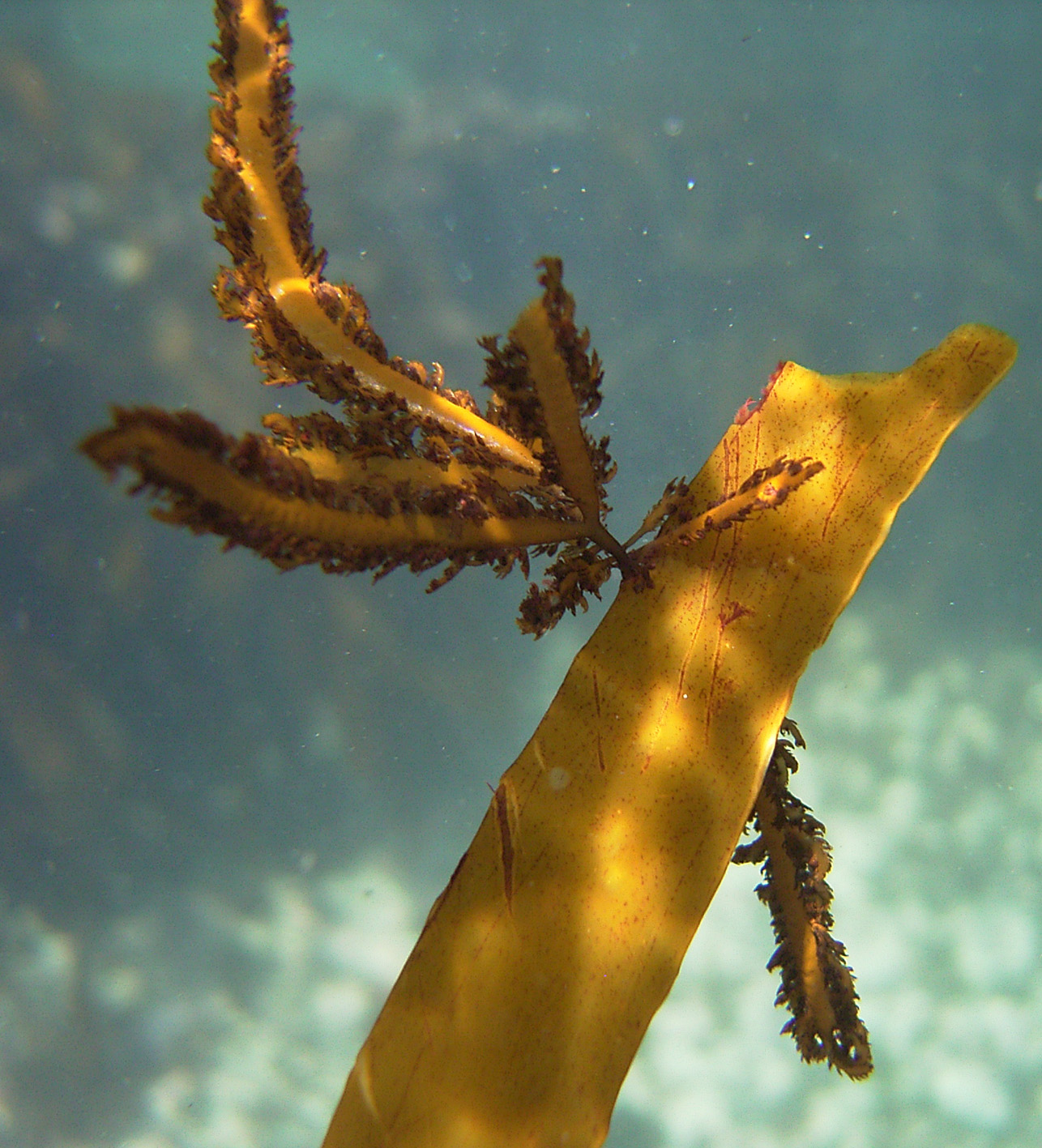
Carpoblepharis flaccida attached to Ecklonia frond, De Hoop (Ecklonia frond about 2 cm wide).
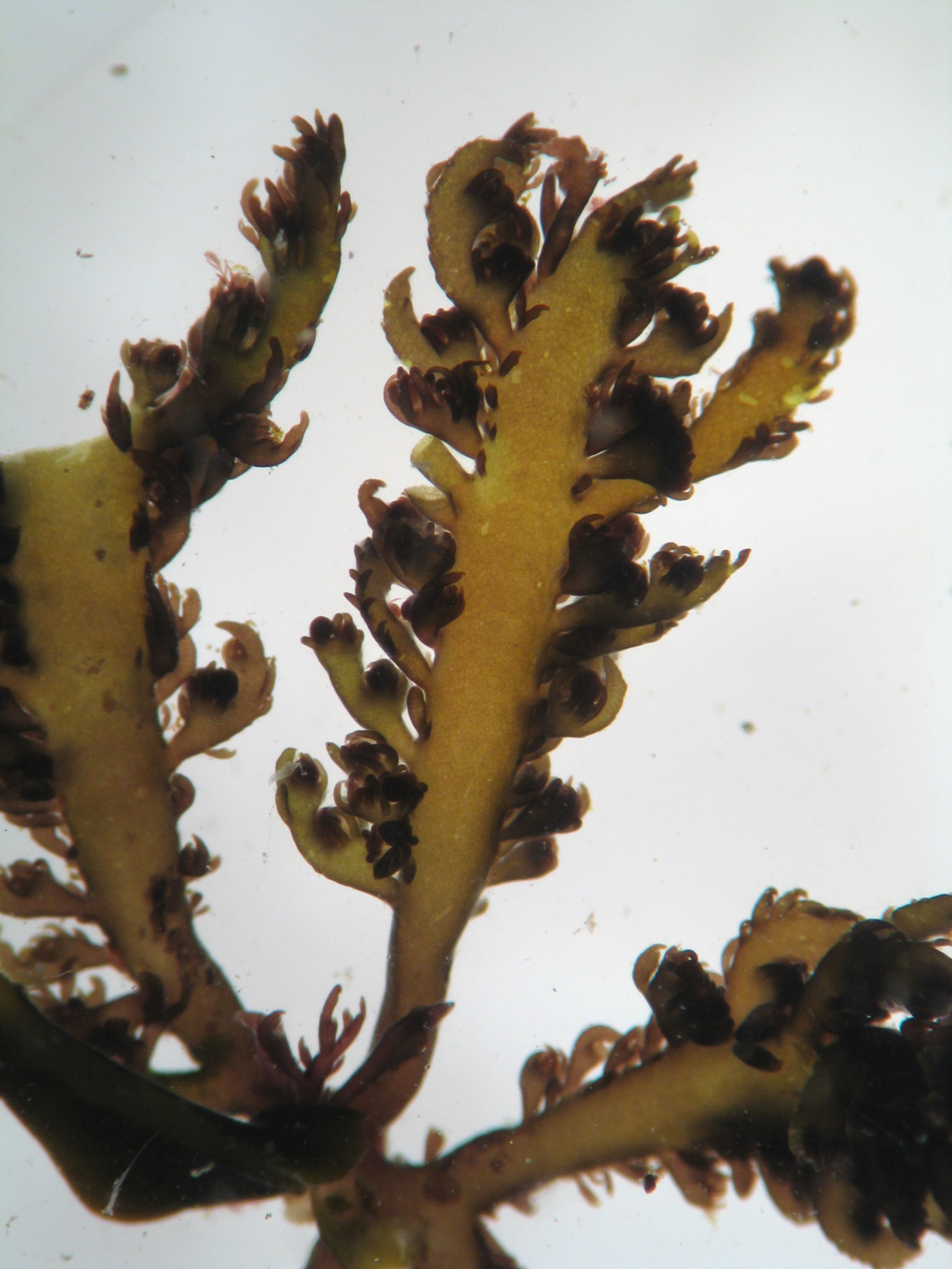
Carpoblepharis flaccida, De Hoop, showing stichidium-like tetrasporangial proliferations.
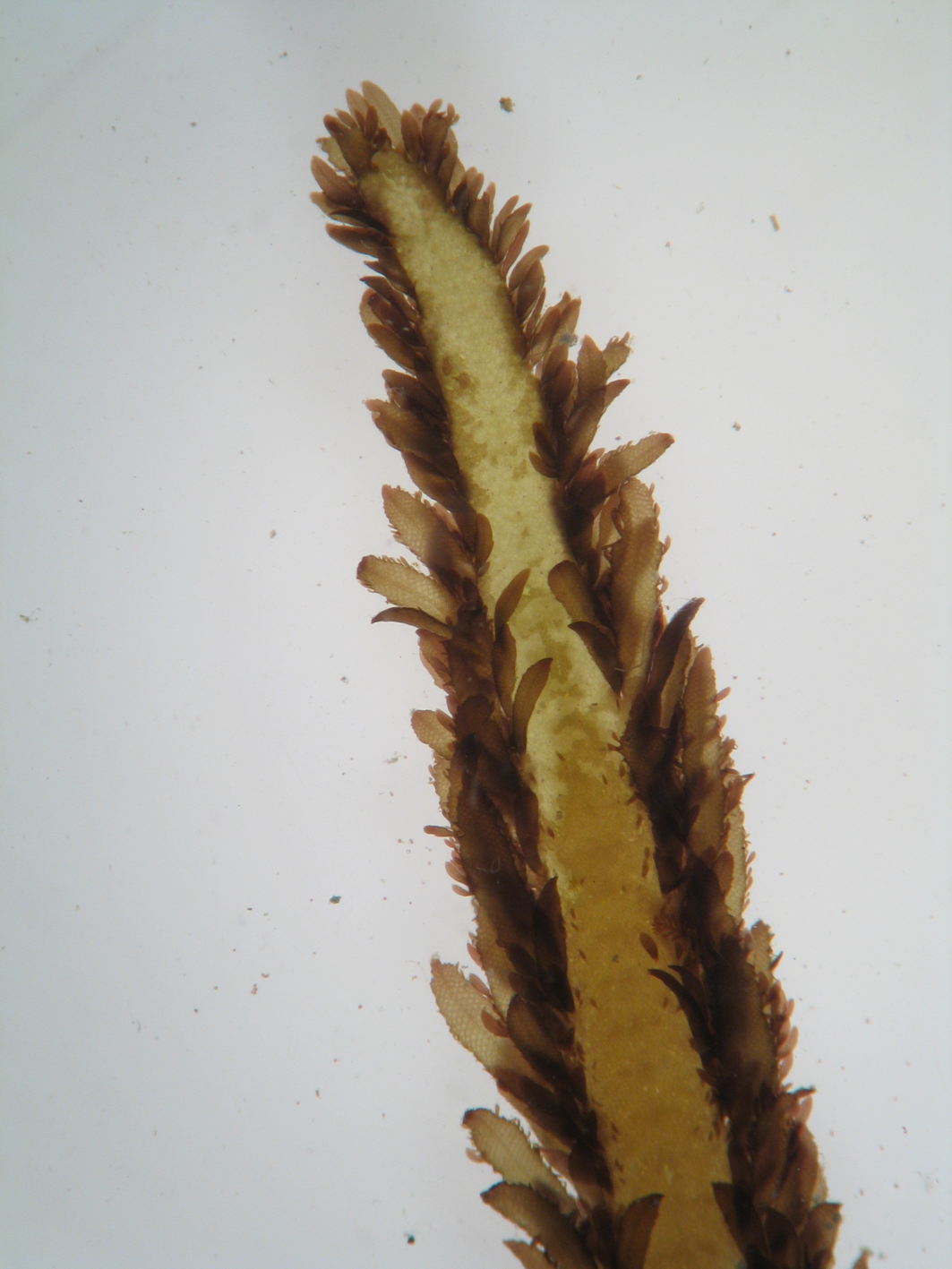
Carpoblepharis flaccida tip of frond, probably an immature tetrasporophyte.
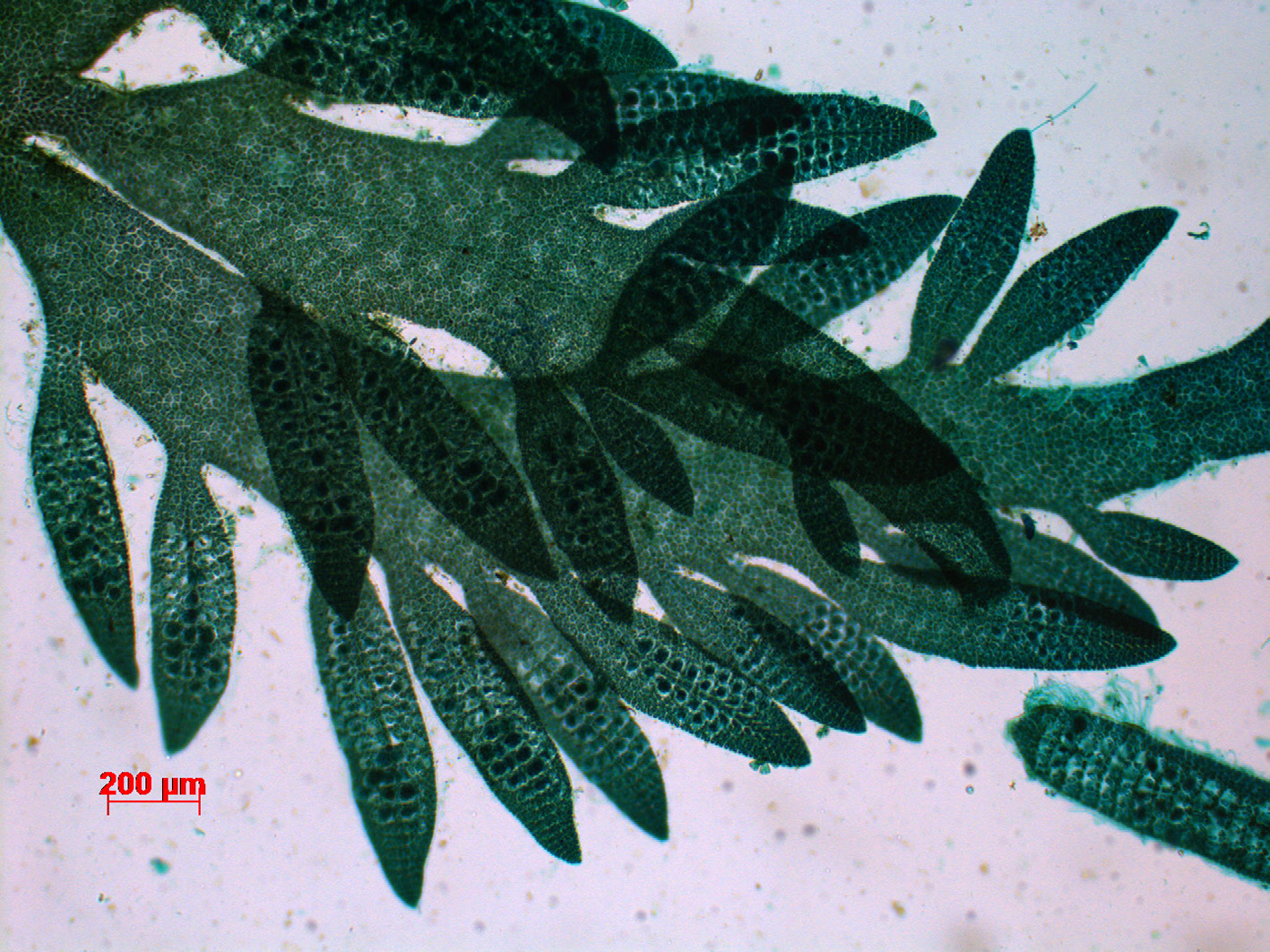
Carpoblepharis flaccida, tetrasporangial (Morgan Bay, on Ecklonia radiata, stained slide).
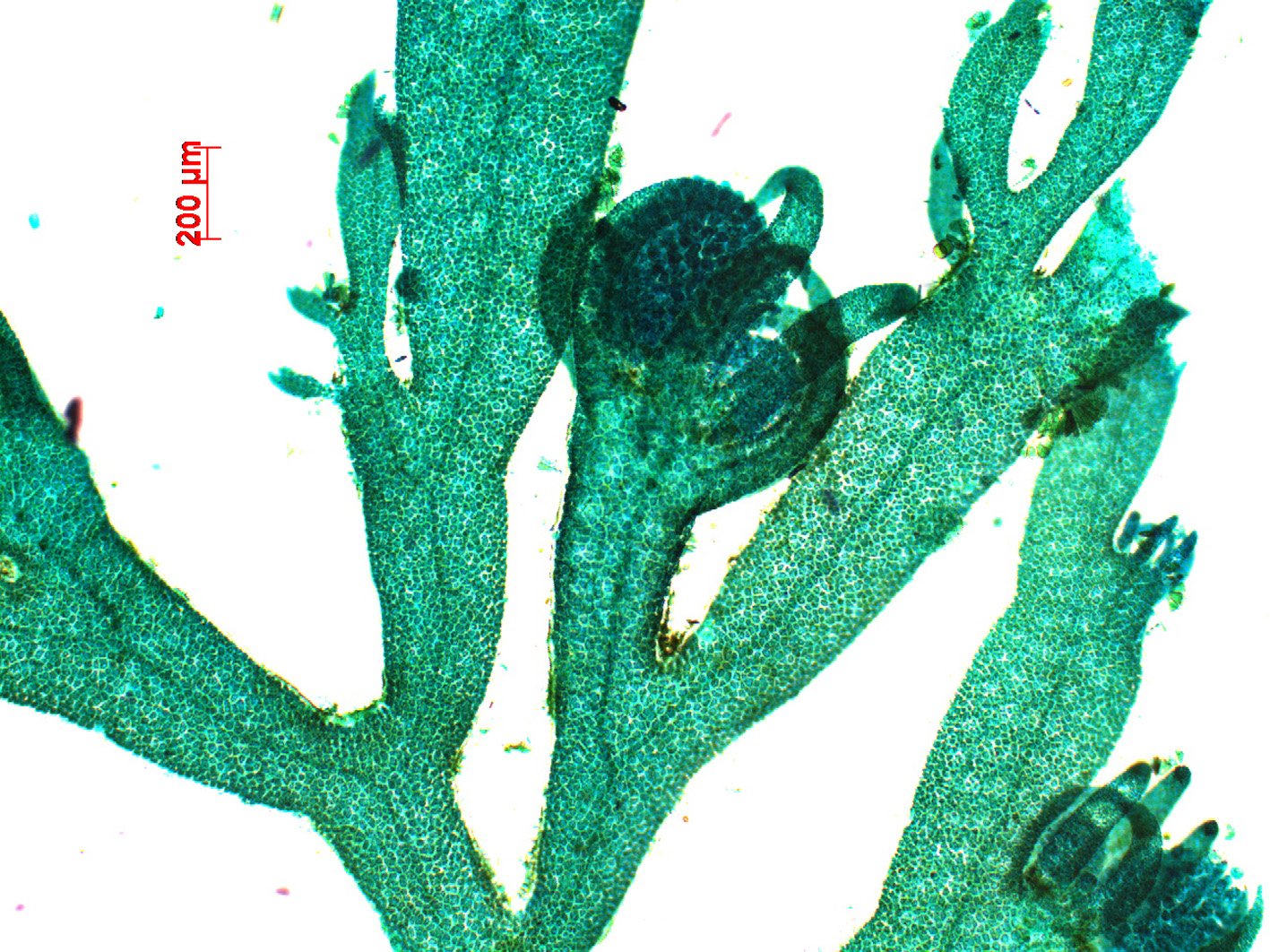
Carpoblepharis flaccida, carposporophyte. Stained slide material.
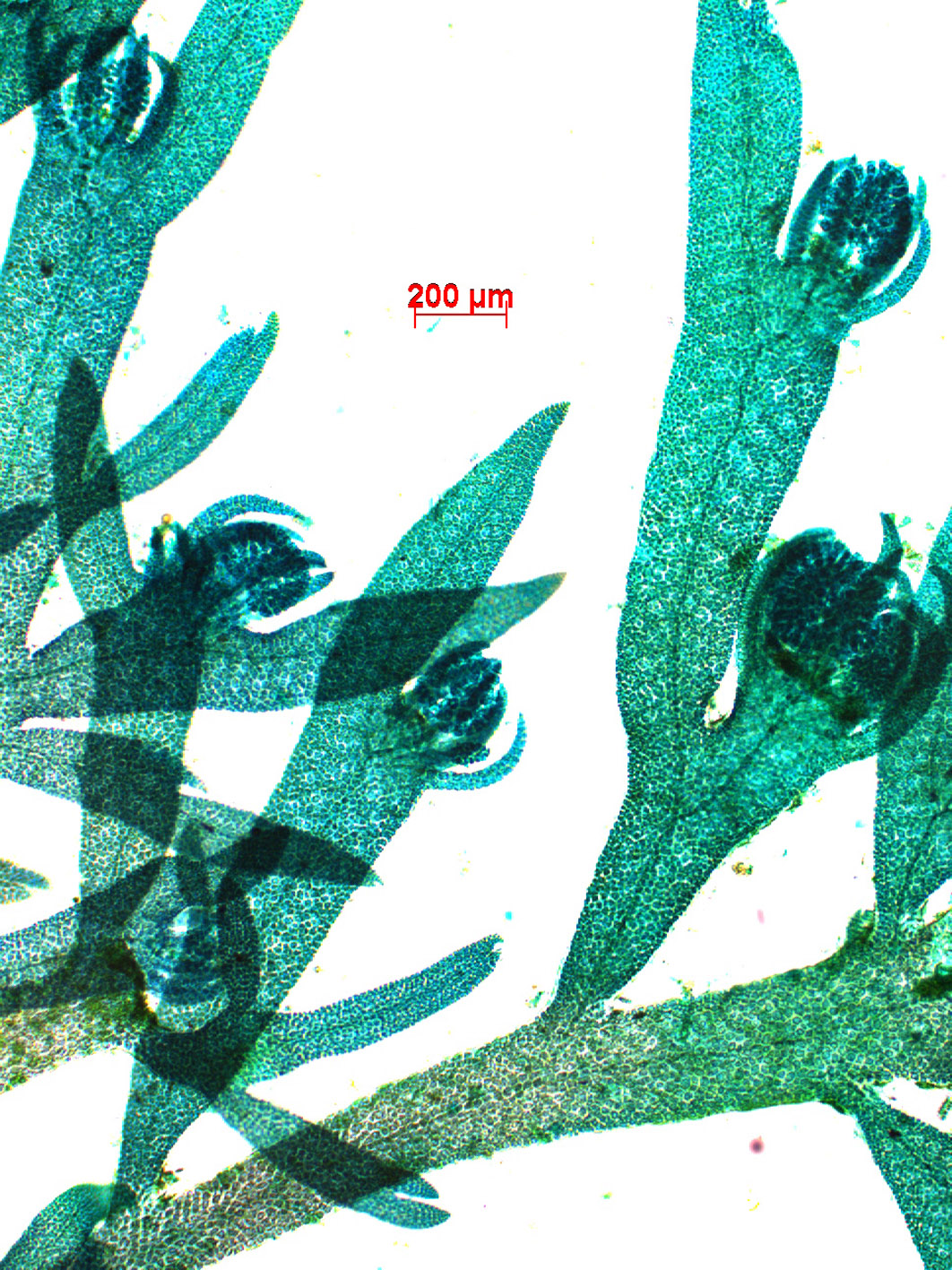
Carpoblepharis flaccida, carposporophytes. Stained slide material.
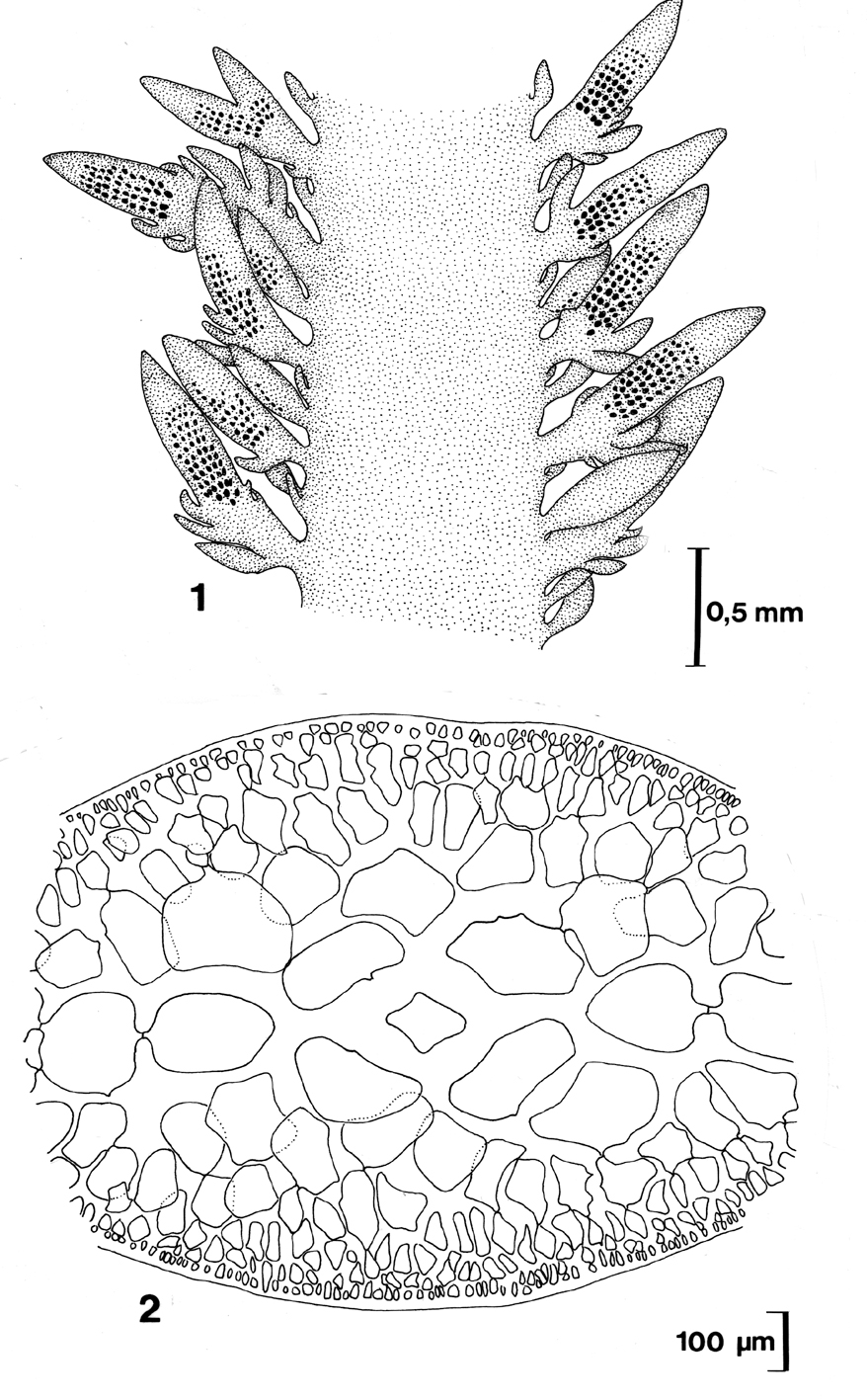
Carpoblepharis flaccida 1. Detail of thallus with tetrasporangial proliferations. 2. Cross section of main axis. Reproduced from Stegenga et al. (1997).
References Carpoblepharis flaccida
De Clerck, O., J.J.Bolton, R. J. Anderson and E. Coppejans, 2005. Guide to the Seaweeds of Kwazulu-Natal. National Botanic Garden of Belgium, Brussels (Scripta Botanica Belgica), 294 pp.
Kützing, F.T. 1849. Species algarum. pp. [i]-vi, [1]-922. Lipsiae [Leipzig]: F.A. Brockhaus.
Seagrief, SC 1988. Marine Algae. In Lubke, RA, Gess GW & MN Bruton (Eds). Field Guide to the Eastern Cape Coast. Grahamstown Centre of the Wildlife Society of Southern Africa, 520 pp.
Ramírez, M.E. & Santelices, B. 1991. Catálogo de las algas marinas bentónicas de la costa temperada del Pacífico de Sudamérica. Monografías Biológicas 5: 1-437.
Stegenga, H., Bolton, J.J. & R. J. Anderson. 1997. Seaweeds of the South African west coast. Contributions from the Bolus Herbarium 18: 655 pp.
Rull Lluch, J. 2002. Marine benthic algae of Namibia. Scientia Marina 66 (Supplement 3): 258 pp.
Cite this record as:
Anderson RJ, Stegenga H, Bolton JJ. 2016. Seaweeds of the South African South Coast.
World Wide Web electronic publication, University of Cape Town, http://southafrseaweeds.uct.ac.za; Accessed on 22 December 2025.